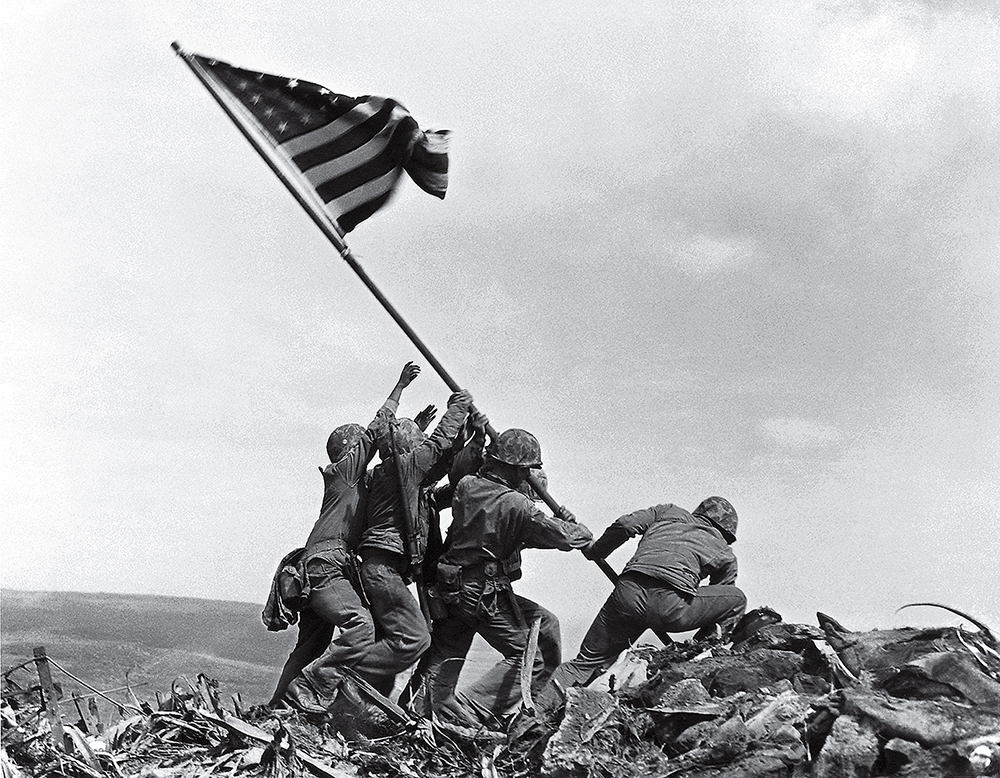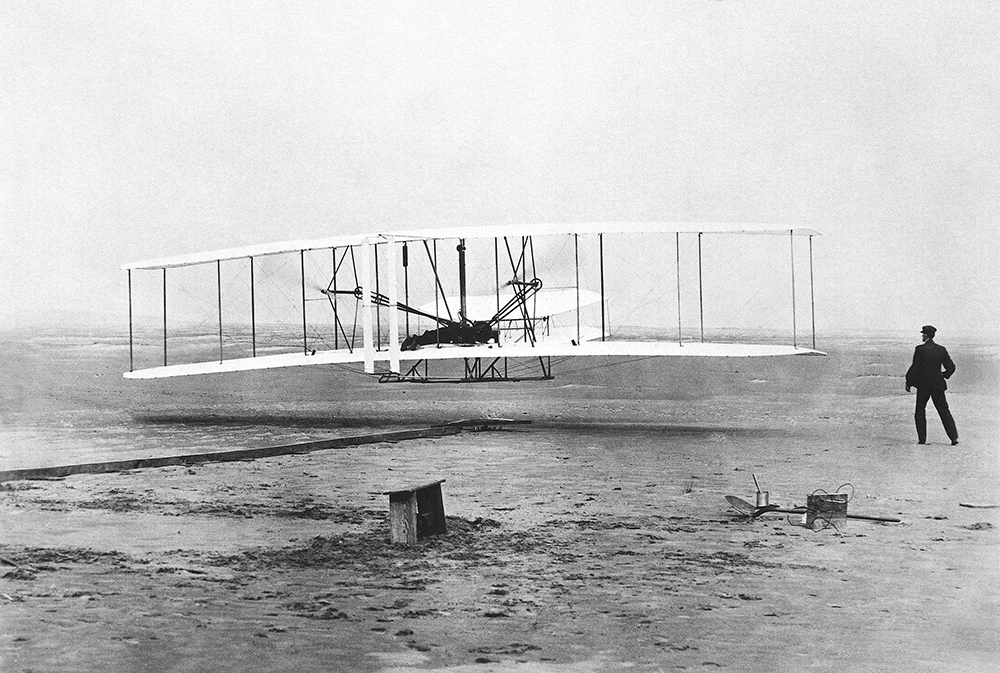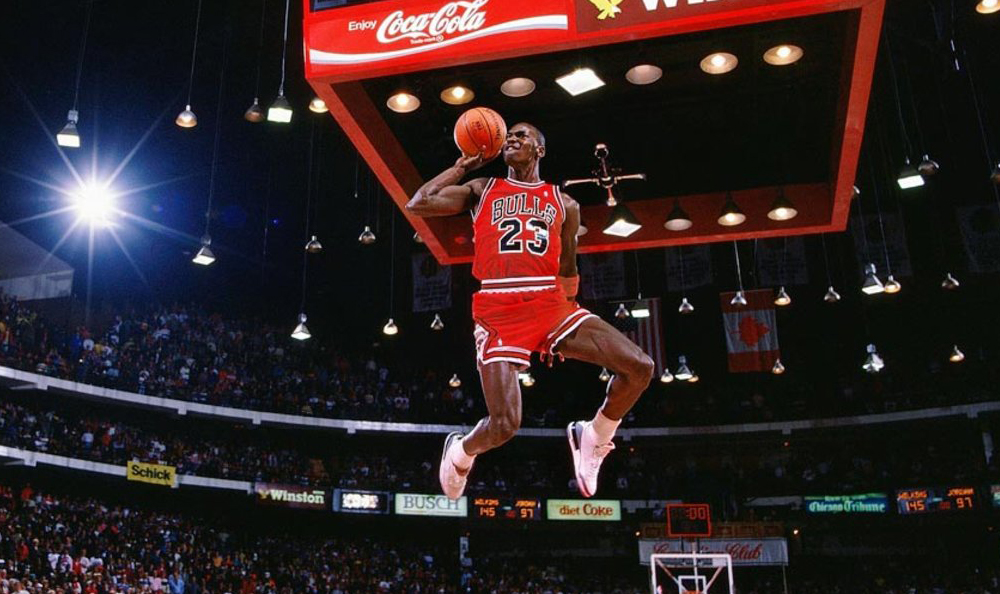
‘A picture speaks a thousand words they say.’ That’s all well and good but we’d like to present our own entry for cliche photography caption of the decade – The best pictures speak without words. Through the annals of time, history is often remembered – not by words – but by the photos used to depict them. The United States in particular, has its fair share of iconic moments captured on celluloid. Here are five that perfectly sum up a few integral junctures in American lore.

Raising the Flag on Iwo Jima | Joe Rosenthal
On February 19, 1945, the USA invaded Iwo Jima – an island used by Japan as an early warning station. Four days later, Joe Rosenthal captured five marines and a US Navy Corpsman raising the Unites States flag atop Mount Suribachi. In exactly seventeen and a half hours after the photo was captured, this image became the face of America in World War II, published widely across print media of the time. President Roosevelt upon seeing the photo, immediately recognized it as a symbol to base his Seventh War Loan drive to help fund the war effort. So epochal was the photo that it was later used to sculpt the Marine Corps War Memorial at the end of the war. The image now holds the distinction of being the most reproduced, Pulitzer Prize winning photograph.

First in Flight | Unknown
We all know the story by now. Orville Wright piloted the first powered airplane for a brief 12 seconds over 120 ft as his co-inventor and brother Wilbur watched on. Having built the airplane and its engine in their bicycle workshop, the brothers invited several newspapers for the event. But only one local journal made it to Kitty Hawk beach on the day. The photo demonstrates how anyone, regardless of background and know-how, can go on to achieve greatness with a little bit of perseverance.
Michael Jordan’s Free Throw Dunk | Walter Iooss Jr
Chicago Stadium is home to arguably the greatest basketball player, Michael Jordan. In 1988 though, the NBA’s dunk contest was the beginning of what would be a career defining season – he would go on to win the All-Star Game MVP, regular season MVP, Defensive Player of the Year, Scoring Champion, Steals Leader, First Team All-NBA and First Team All-Defense. And it all started with the momentus Free Throw Dunk. Jordan, needing a score of 49 to win his second consecutive Slam-Dunk Title, retreated to the opposite end of the court before successfully landing a dunk from the free throw line. Jordan won, the crowd erupted, and Air Jordan III sneakers would become an instant classic.

Flying Skirt | Sam Shaw
1954 America – Ellis Island had shut as a point of immigration; communism was being outlawed; the words ‘under God’ were added to the Pledge of Allegiance; Elvis Presley had just begun his musical career. And then there was Marilyn Monroe. By now she had become the undisputed sex symbol of the era, starring in her archetypal dumb blonde roles in hits such as the Asphalt Jungle, All About Eve, Gentlemen Prefer Blondes, and How to Marry A Millionaire. Director Billy Wilder while filming The Seven Year Itch hired Sam Shaw, a longtime friend of Monroe, to be the set photographer. The iconic photo was shot on the streets on New York; Marilyn’s character steps over a roadside vent to have her skirt lifted by the wind from a subway passing below. What most people don’t know, however, was that the entire shoot was part of a publicity stunt for bystanders and press to create hype about the movie – none of the actual footage shot on the streets was usable because of howling crowds off screen.
Every single one of these images define different elements that represent what America stands for today. Think there are more that we’ve missed out? Let us know!
‘A picture speaks a thousand words they say.’ That’s all well and good but we’d like to present our own entry for cliche photography caption of the decade – The best pictures speak





